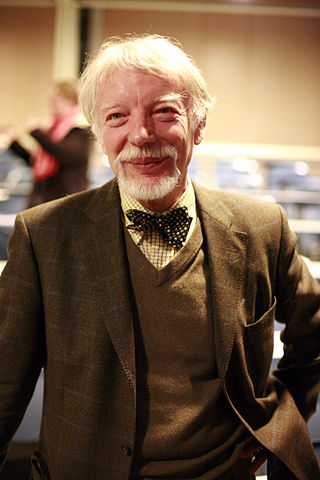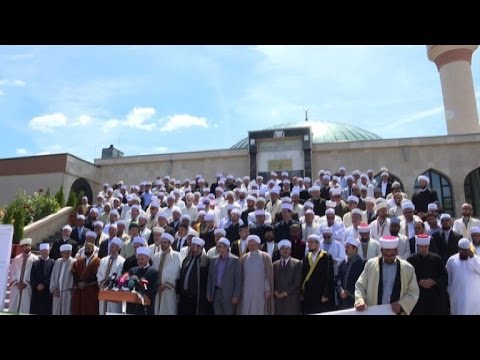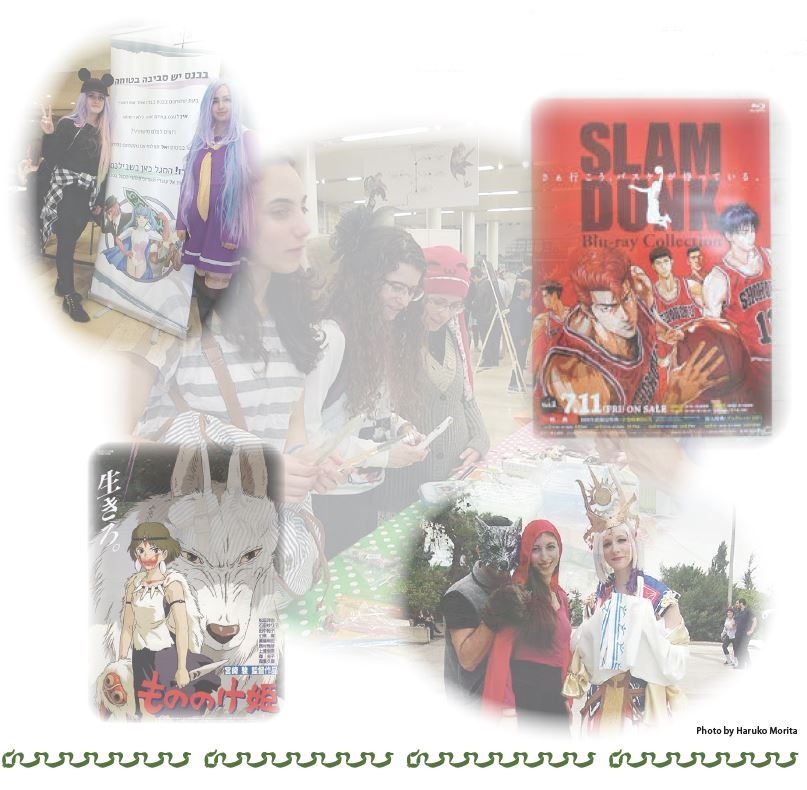Aggressiveness of Islam and Imam’s anti-terrorism declaration
Satoshi Ogawa, Vienna-based journalist
From the Autumn Issue of the electronic “Salaam Quarterly Bulletin”, No.23, August 2017
There is no solution which ignores the reality. The same is true with the solution of the problem of Islamist terrorism. In Europe, some people delete a word “Islamic” from Islamic extremist terrorism incidents and look at those incidents as extremist terrorist incidents. This is nothing but sophistry in terms of logic and reality. There is no other way to deal with Islamic extremist terrorism than returning to the teaching of
Islam and humbly searching for the truth. Hiding behind the logic of “that is not true Islam” does not lead to a solution and is irresponsible.
Excuse made by Islamic law scholars shortly after a series of terrorist shootings in Paris, France in the beginning of 2015

Charlie Hebdo shooting took place on 7 January 2015. Two brothers, Saïd and Chérif Kouachi, forced their way into the offices of the French satirical weekly newspaper Charlie Hebdo in Paris, Armed with assault rifles and other weapons, they killed 12 people and injured 11 others. The photo was taken near the headquarters of Charlie Hebdo just several hours
after the shooting.(Creative Commons, Thierry Caro / Jérémie Hartmann)
Three Islamist terrorists attacked the headquarters of the French weekly newspaper Charlie Hebdo and a Jewish store in France. Those incidents ushered the recent series of Islamist terrorist incidents in Europe. In response to a journalist’s question at that time, a moderate French Islamic law scholar argued, “Terrorists are not true Muslims. Islam has nothing to do with terrorism,” and repeated that Islam does not condone terrorism.
On the other hand, Western journalists rebutted, saying, “Terrorists carrying out terrorist attacks in the world invariably cite the Koran and praise Allah. Arguing that they have nothing to do with Islam is a mere excuse.” Terrorists themselves claim that they are Muslims.
Latent violent nature of monotheism

Dr. Jan Assmann
Professor Jan Assmann, a theologian, explains “Monotheism has latent violent nature. Those who believe absolute and unique God cannot accept those who believe in other monotheism. Thus, they try to defeat them by violence.” He cites Islamic extremist terrorism as an example. He argues that actions of the international terrorist group Al Qaeda reflect monotheistic Islam’s latent violence.
The professor points out, “Violent nature is seen in Islam because Islam is lagging behind in separation of its teaching and politics. Other monotheisms namely Judaism and Christianity have been practicing separation of religion and politics for long time.” He argues that establishment of fundamentally non-political concept of Islam is urgent in order to eliminate violent nature of Islam.
Violent nature of the Islamic State and Boko Haram is proof of Professor Assmann’s theory. Islamic fundamentalist terrorist groups escalate sword rattling violent actions with a sense of mission to punish God’s enemies. He argues that such violent nature is not found in Judaism and Christianity which share the same father of faith Abraham with Islam. Professor Assmann explains, “Judaism and Christianity have already passed through the process to eliminate political elements of monotheism. In case of Judaism, it is Messianism which is the basis of Judaism’s elitism. That is expectation for advent of the savior. In case of Christianity, it has eliminated violent nature latent in its teaching by emphasizing difference between the Kingdom of Heaven on Earth and the Kingdom of Heaven in Heaven.”
Non-politicization of Judaism and Christianity

Late John Paul II
In the Old Testament, God of the Jews is called “a jealous God” (Exodus 20). In the past history, Jews followed God and defeated pagans. With passing of time, Jews suppressed their fangs. Among monotheisms, Judaism alone does not promote missionary works. This is because they defined difference of their position from other religious sects by maintaining their sense of identity as God’s chosen people.
On the other hand, Christianity fully manifested its violent nature in the Middle Age as shown in expeditions of the Crusades. Christianity subsequently experienced Enlightenment, eliminated its violent nature and implemented separation of religion and politics. However, Roman Catholicism with 1.2 billion followers throughout the world still adheres to its identity as “the only
universal Christian church which inherit Jesus’ teachings” under its church theology. In other words, it is declaring that it “monopolizes the truth.” This is written in “Dominus Jesus” (2000) published by Pope John Paul II.
It boastfully states, “History of religion was a battle between the absolute truth and other absolute truths. In terms of doctrine, the Catholic Church still monopolizes the truth,” showing a sense of superiority to pagans. If this is the case, it means the Catholic Church still has latent violent nature.
In any case, one cannot deny that latent violent nature can be seen in three major monotheisms derived from Abraham, namely Judaism, Christianity and Islam, in terms of doctrine.
Islamic leaders who stood up

On June 14, Austria’s Muslim community gathers at the Vienna Islamic Centre to make a joint statement against extremism and terrorism following the London attack, after more than 300 imams sign a declaration. (YouTube)
At this time, Muslims from Austria stood up. Islamic leaders (imams) in Austria gathered in the Islamic Culture Center in Vienna on June 14 this year and signed “Anti-Terrorism Declaration” in protest against Islamic extremist terrorism. This was the first such signing of anti-terrorism declaration by Islamic leaders in Europe. About 180 imams attended the signing ceremony and other imams sent their signature by mail. More than 300 imams in total attached their signatures.
Signing of Anti-Terrorism Declaration was proposed by the Austria Islamic Faith Community (Chairman, Ibrahim Olgun). The Community aims at declaring domestically and internationally that “Islam is a religion of peace and Islamic extremism and terrorist activities are totally incompatible with the teachings of Islam” in response to frequent Islamic extremist terrorist incidents in Europe, thereby “promoting understanding of Islamic teachings.” Chairman Olgun stated that “it was a historic day for Islam.”
The tile of the declaration is “Appeal to All Muslims, Wishing Contribution to Peaceful Coexistence in Austria” and it starts with “In the name of Allah” and declares to “criticize all acts of terrorism in the world.”
Outline of “Anti-Terrorism Declaration” (June 16, 2017)
“If man kills one human being, it is the same as killing all mankind. If he saves one human being, it is the same as killing all people.” (Koran 5:32)
We imams in Austria are partners of the society and are determined to make efforts to peacefully coexist in Austria.
We imams in Austria:
- Criticize terrorism and violent extremism occurring throughout the world.
- Barbaric acts and terrorism of Islamic extremist terrorist group Islamic State (IS) are against Islamic teachings and we criticize them severely. IS terrorists are abusing our peaceful religion Islam for achieving their own political goals.
- Clearly state that task of Muslims is to actively contribute to safety and peace of the country where we live.
- Freedom is indispensable goodness for all people and challenge for entire society. We are determined to strive for the freedom at any time anywhere.
- Islam considers human dignity as an indispensable value and rejects any words and actions which are against that principle.
- In this connection, emphasize that terrorism does not belong to any religions, races and cultures.
- What is most desired of Muslims is to actively participate in various fields of the society and serve the society.
- Firmly uphold the spirit of the Austrian constitution.
- Emphasize the importance of non-radicalization (education to prevent radicalization) in the fora with the youth. At the same time, we want to warn against anti-Islamic, nationalistic words and actions which criticize all Muslims. Such tendency only unnecessarily instigates the society and leads to divisions. Those creates a hotbed of radicalization of the society. It became even more important than before to protect religious minorities from political opportunism and hostility. Fight against nationalism, anti-Islamic hostility and Islam-phobia is challenge to the society just like fight against extremism. As members of the society, imams in Austria share responsibility for construction of the society of mutual assistance.
Footnote:
Pope John Paul II publicized it while he was a Pope. It declares that the teachings of the Catholic Church are God’s universal truth. The idea that they “monopolize the truth” is at the foundation and is an obstacle to the promotion of ecumenical activities with other religious sects.
Japanese anime contribute to the Middle East peace
Tominari Sano, journalist
Disney animations like illustrated books

Aladdin’s TV series is considered one of Disney’s finest TV animation work.
Walt Disney of the United States has a large share of the animation industry.
Disney animations are characterized with easy-to-understand story lines and characters which allow audiences to start watching in the middle of a story. Their simple narrations along with those characteristics created a concept that animations are for children. Its marketing strategy which targeted parents and families behind children brought great results. However, there are people who were not satisfied with children-centered animations and they started paying attentions to Japanese anime and manga cartoons.
Animations in the United States such as Disney’s are geared for families and children. American cartoons such as Marvel Comics and DC Comics created many comics which tend to reward good and punish evil.
Japanese anime

Japanese manga and anime have great varieties and their storyline are uniquely developed. “Your Name.”, one of the most successful anime movie worldwide, is the story of a high school girl in rural Japan and a high school boy in Tokyo who swap bodies.
On the other hand, Japanese manga and anime have great varieties and their storyline are uniquely developed.
Their genres are rich including sports, action, romance, science fictions and so-called sprouting type featuring beautiful girls. There are games and animations in those rich genres. Manga and anime are not concentrated in certain genres but are rather developed fully in all different genres. This is a factor which attracts attentions in overseas market.
Many times, unless audiences continue watching Japanese anime they lose track of the storyline. Disney animations are likened to illustrated books, but Japanese anime are likened to novels.
Storylines with little religious tone make them effective
Their storylines with little religious tone are accepted widely and as the result transcend nations and races.

Cover of Captain Tsubasa Bunkoban edition volume 1 as published by Shueisha. Captain Tsubasa has sold over 82 million copies worldwide.
For example, animation films such as “Spirited Away” and “Princess Mononoke” directed by Hayao Miyazaki do not emphasize Japan’s religious views. “Spirited Away” was presented as the growing up saga of the heroine Chihiro and incorporated unique colors in the background.
In the genre of sports, baseball of “Kyojin no Hoshi (Star of the Giants)” was replaced with cricket in India. But the main character’s dedication to his sports and his friendship and bond with his teammate resonated deeply with people’s hearts in India.
A lot of genres of anime in sports are noteworthy.
“Captain Tsubasa” has achieved global popularity and many people are inspired by the manga and anime and actually became professional soccer players. “Ganbarist, Shun” is manga on gymnastics and Japanese artistic gymnast Kohei Uchimura loved to read the manga from which anime was later created. Other than those, there are “Haikyu!!” manga on volleyball, “Slam Dunk” and “Kuroko’s Basketball” manga on basketball, and “Ace of Diamond” manga on baseball. There are other manga series on swimming, motorboat, bicycle, kendo, sumo and figure skating among others.
Japanese anime and manga attracting attention in the Middle East
Japanese manga and anime are popular in Europe and the United States. In 2000s, the Middle East countries started paying attention to them. They were broadcast through TV stations in 1980s. In 2000s, high-speed Internet became popular and viewing Japanese anime in unofficial sites became possible. Many more people started watching anime.
In May this year, the Japan External Trade Organization (JETRO) sponsored a popular culture event, “Middle East Film Comics Convention 2017 (MEFCC2017)” in United Arab Emirates which is the biggest pop culture event in the Middle East and North Africa region. It conducted a survey about Japanese anime and manga there.
The survey was conducted through a questionnaire filled by randomly selected 285 people among those who visited the Japan Pavilion over three days. 98.2% of respondents said they like Japanese anime and manga. Many of those respondents pointed out moving, moral, and highly original storylines as the reason for their favorable opinion.
Some survey respondents pointed out the length of each episode.
Challenges facing Japanese anime
As Japanese anime series were introduced overseas, exposure of skin has been an issue. Among Japanese anime series, sprouting type anime depicting beautiful girls are considered to be against the teaching of Islam. Also, violence depicted in some action manga and anime is viewed unfavorably. In this respect, anime and manga on sports can be brought to the Middle East.
Some expressed their desire to access anime and manga translated into Arabic and English.
Contribution to the Middle East peace
There is expectation that Japanese anime and manga may be able to bridge Arab/Islamic sphere and Israeli/Jewish sphere which are in conflict.

The Haru-Con, organized by AMAI(the Association of Manga and Anime in Israel), was held at the Internaitonal Convention Center in Jerusalem on March 12. (photo by Haruko Morita)
In 2016, during “Haru-Con” in Israel sponsored by Association of Anime and Manga fans, an even in which fans of Japanese manga and anime gathered was held in the neighboring Jordan. Although the size of the Jordanian event was far smaller than that of the Israeli event, some participants said, “Although I don’t like Israel, I may come to like those who come to the Anime event.”
In Egypt, Japanese animations were introduced during an event on Japanese culture, and it was a great success.
Isn’t this a proof that Japanese animations play a role of bridge to ease the heart of confrontation and resentment between Arab/Islam and Israel/Judaism? They share a common feelings of Japanese anime fans and as fellow fans they can come to feel that “they are not bad people.”
However, Disney or Japanese anime industry promote a business-like approach centered on copyright of characters, etc., which is causing negative reactions. In case of Japan, anime works and characters attract fans and the market tends to expand from those. Because of this, people who are fans of the same anime works and themes promote information exchange beyond barriers of race and religions. This will bring about opportunities for mutual understanding or efforts to try to understand each other.

Two Egyptian boy students strike a pose of ninja and swordsman on Japanese culture day at an university in Cairo last year.(photo by Shinkichi Suzuki)
In Japan, there are nerd culture to thoroughly pursue certain anime work and character (which is criticized as overly exclusive in Japan but positively regarded as expertise in overseas) and costume play culture (wearing costumes mimicking anime characters).
It may sound extreme, but this may be one of means which which the Middle East peace can be achieved.

More contents available in the electronic “Salaam Quarterly Bulletin”, No.23, August 2017.
